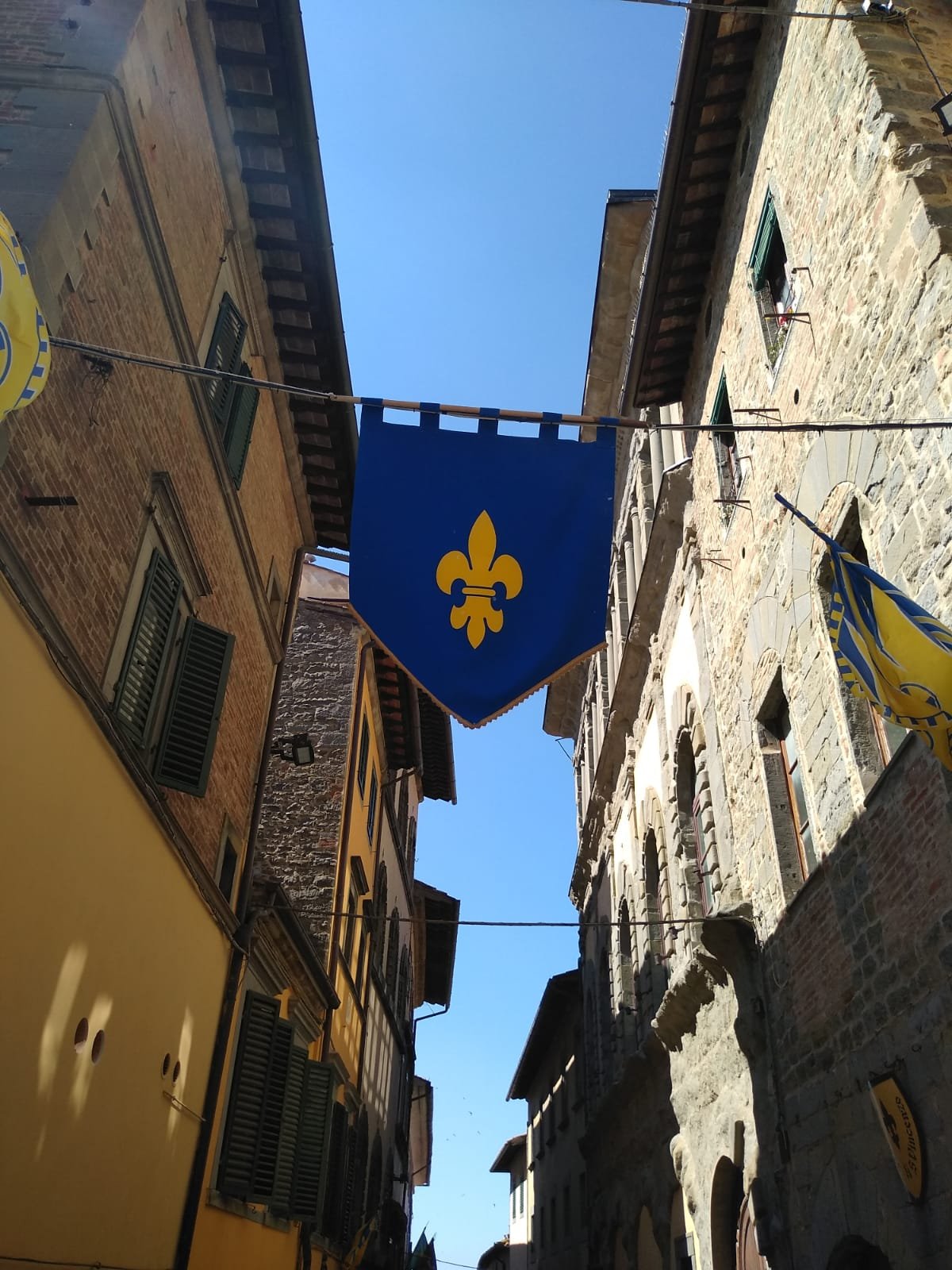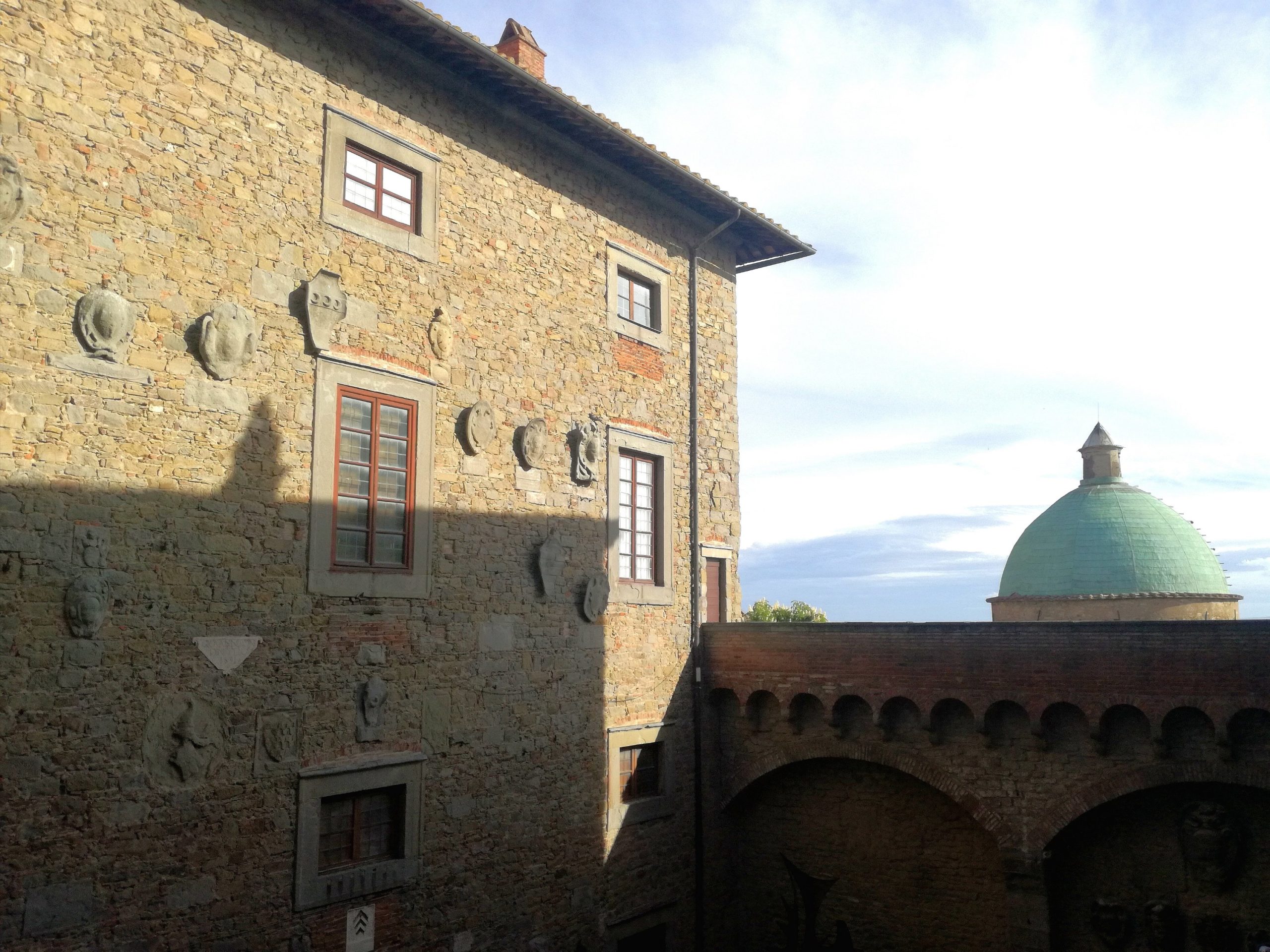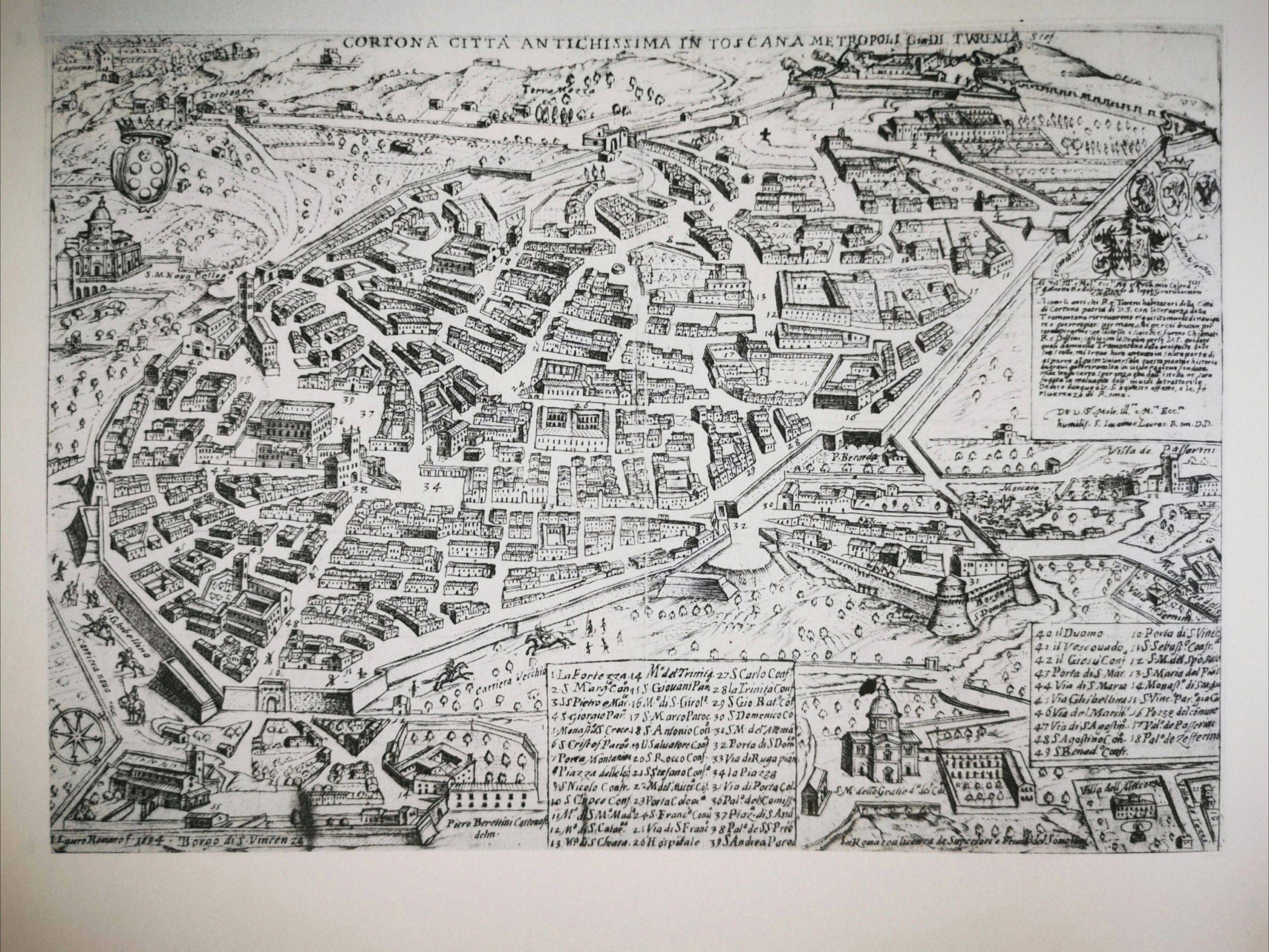A brief history of Cortona, Italy
How old is Cortona? The answer is over 2000 years old! The history of Cortona is a fascinating one.
Some Greek and Roman historians – although with different stories and different names (Croton, Curtun, Corito) – date Cortona’s origin around the V century BC. This is also confirmed by the findings that emerged from the Etruscan tombs, displayed at the MAEC museum.
It is not by chance that Cortona is known for being “mother of Rome” and grandmother of Rome”. (Read more about “the legend”)
Cortona in the Etruscan & Roman times
For countless years, Cortona has dominated the valley below. In the Etruscan period, due to its strategic position, Cortona became one of the 12 cities of the Etruscan League together with Arezzo and Perugia. (Who were the Etruscans?) The massive walls (read more), the archaeological discoveries and the tombs of its Principes, still visible today, are a testament to the power of the ancient flourishing city, as it powerfully and culturally boomed.
The town continued to grow throughout Roman times. At that time the area of the main squares was the foro, where the south and the east-west axis of the town, the “Cardo” and the “Decumano”, intersected. After the Roman splendor, the community slowly began to decline due to invasions, sacks and depopulation. The valley below gradually returned to marshland.
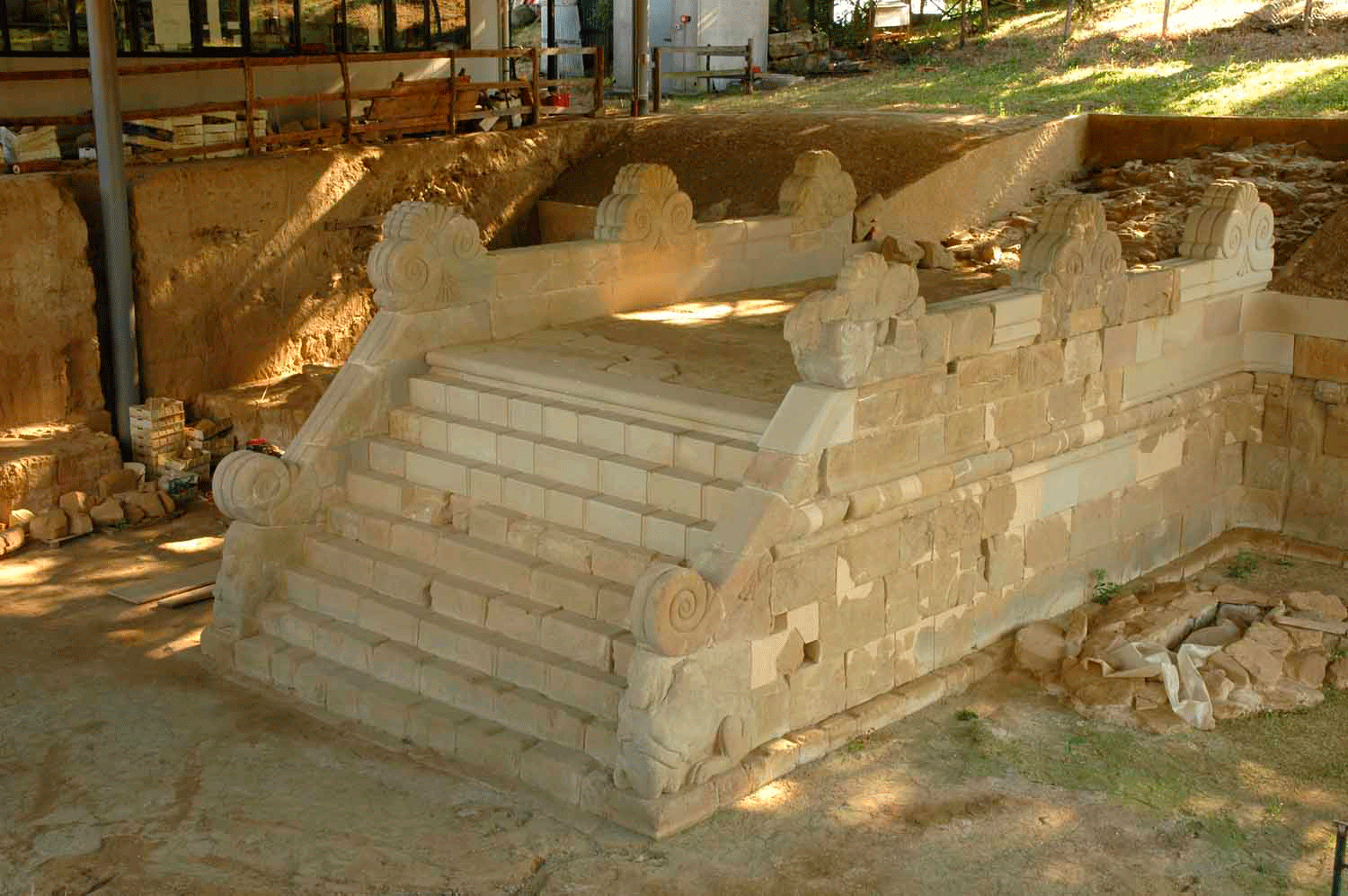
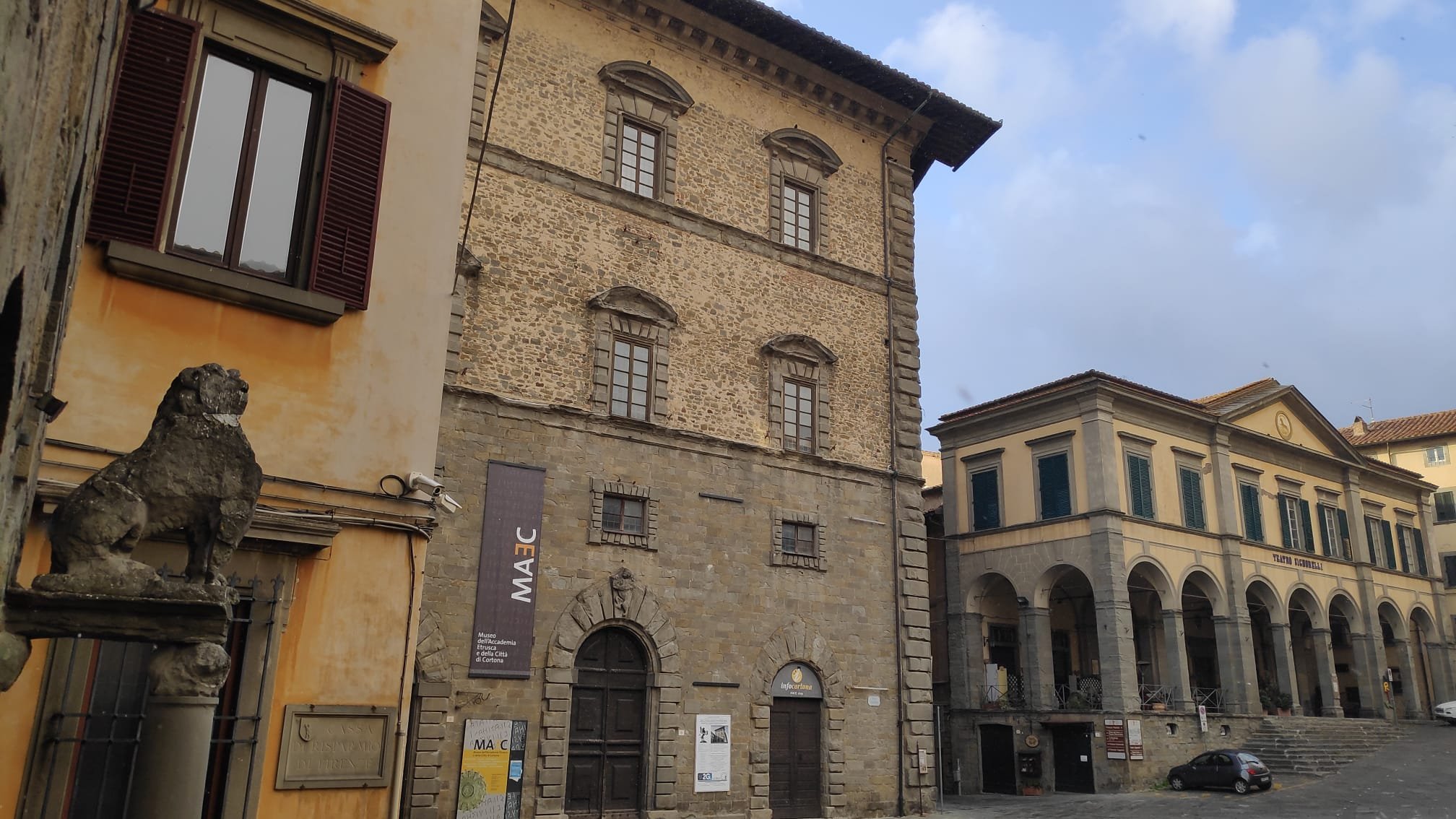
Medieval time and Renaissance: traces to the modern Cortona
Eight centuries later, after the end of the feudal system, Cortona flourished again. In the XIII century, it became an independent municipality, ruled by a podestà and a Capitano del Popolo. This period was marked by internal conflicts between social classes and parties and by the wars against Arezzo and Perugia. In 1211 and a few other times later, Saint Francis of Assisi came to Cortona to pray in the place that today is known as “Le Celle” hermitage. (Le Celle is one of my top 5 in Cortona)
In the XIV century, Cortona became a Signoria under the jurisdiction of the noble family Casali. The family had great political skills and managed to keep Cortona an independent town for the following century. The Casali also built their palace in the town center, Palazzo Casali (which today hosts the town’s museum, another must-see in town).
In this period, a new bourgeoisie emerged to enrich the town with elegant public buildings, refined houses, new churches and convents. The town finally became a lively cultural center.
In 1411 Cortona was sold to Florence, and remained pretty much under its control until the unification of Italy (1860). With Florence and the Medici rulers, Cortona experienced the great artistic and cultural movements of that time. The results were improvements and restorations of churches and buildings. The works enriched the town yet preserved its medieval charm, which can still be perceived today when strolling along the steep streets. A map of 1634 by Pietro Berrettini (read about him) shows the town in its configuration, pretty much unaltered today!
